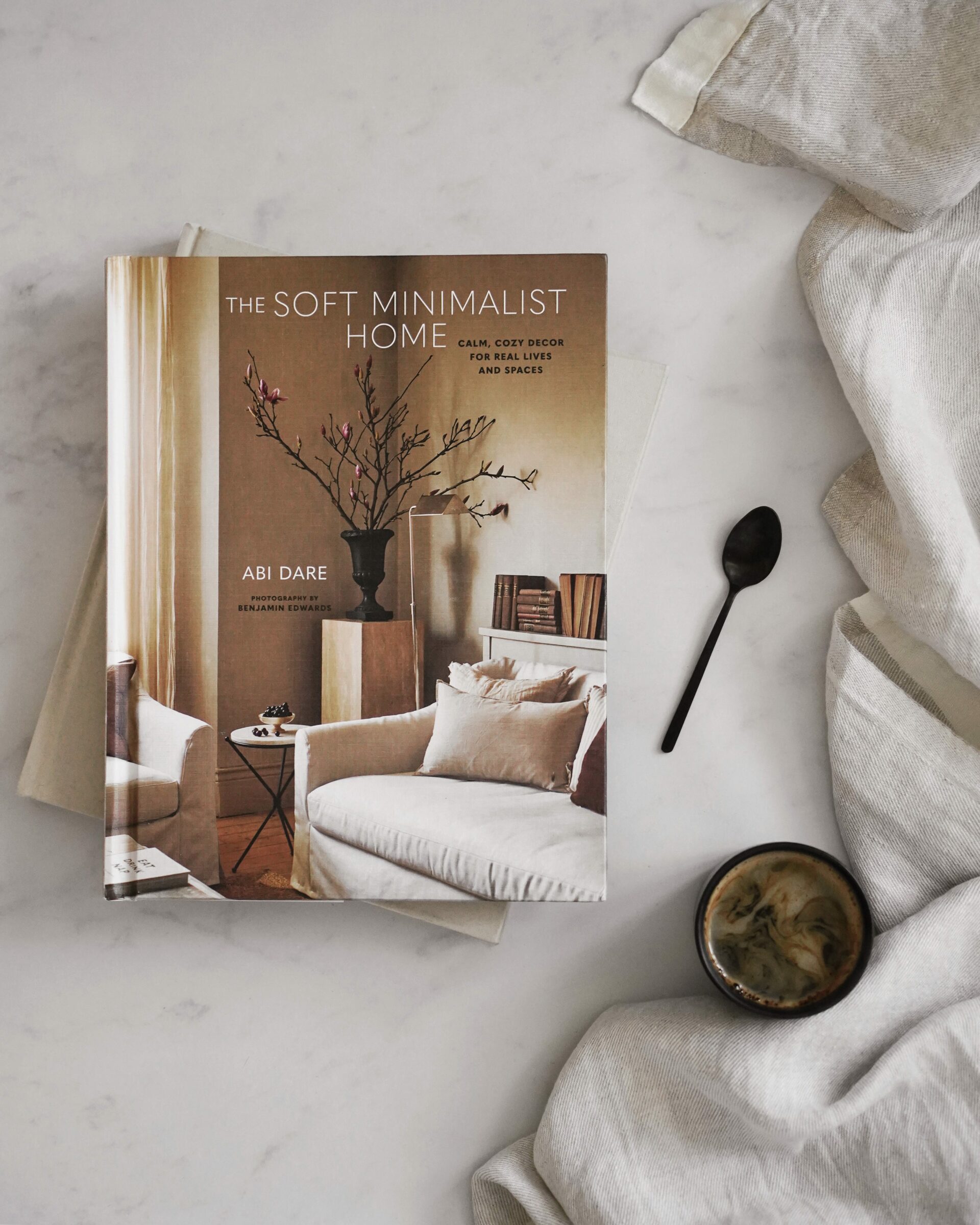As we step into the new year, we’re thrilled to feature award-winning interiors blogger, Abi Dare of These Four Walls. Since 2014, Abi has inspired interior design enthusiasts to embrace minimalist decor and simple, relaxed living. Influenced by her experiences as a synaesthete, Abi’s work blends beautiful visuals with practical advice, showing that calm, understated spaces are achievable for everyone. Through her blog, Instagram @thesefourwallsblog, and her latest book, Abi shares real insights and stunning imagery that encourage a more mindful approach to home design and decorating.
Join us as we explore Abi’s recently published book, The Soft Minimalist Home, and discover her top tips for creating serene, minimalist spaces for a blissful home.
1. Can you tell us about your background and when you first got into interiors?
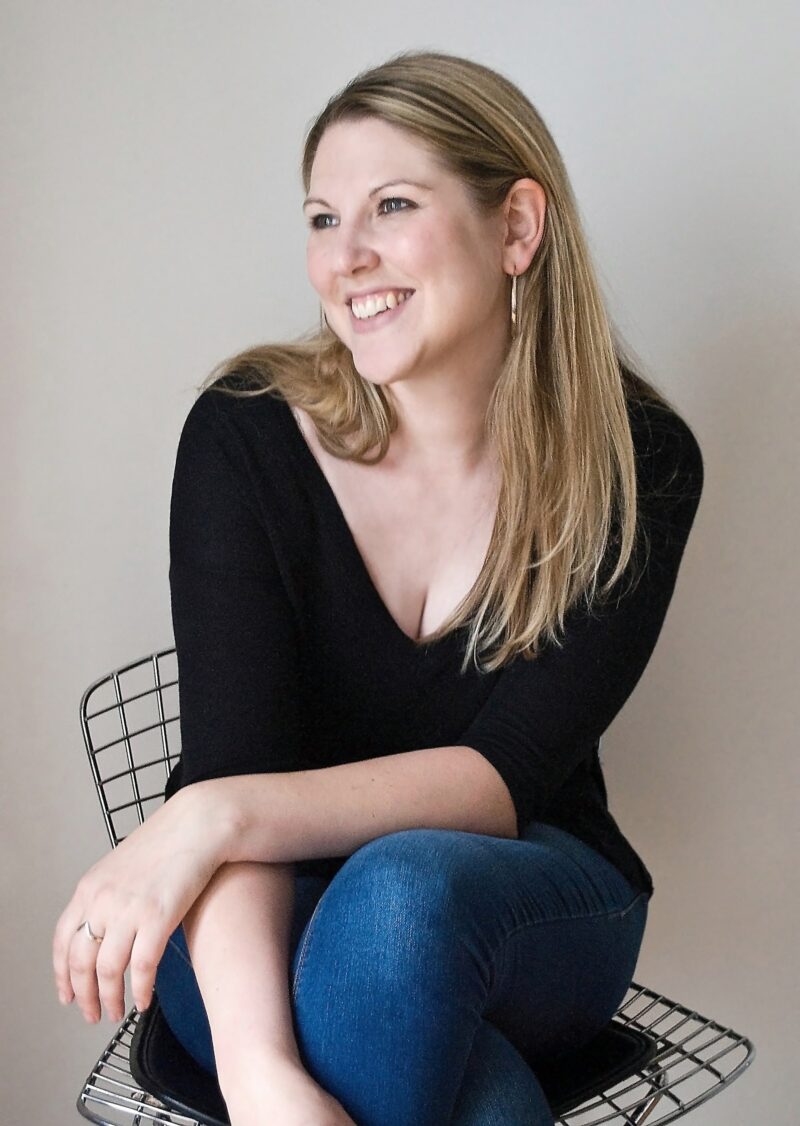
Credit: Abi Dare, These Four Walls
I’ve been interested in interiors for as long as I can remember, and my parents often came home from work when I was a teenager to discover I’d rearranged all the furniture (and, on one occasion, even ripped up the carpet in my bedroom!). I didn’t initially pursue a career in that area though, and I studied modern languages at university before working in the PR and travel industries. But my passion for design was always lurking in the background, and in 2014 I set up my blog, These Four Walls, to share it with others. It started as a hobby, but it proved popular with readers, and in 2017 I left my job to focus on it full-time. I now do that alongside freelance styling, writing and photography, and I provide affordable e-design packages to help clients create a home they love.
2. How would you describe your own home and interior design style?
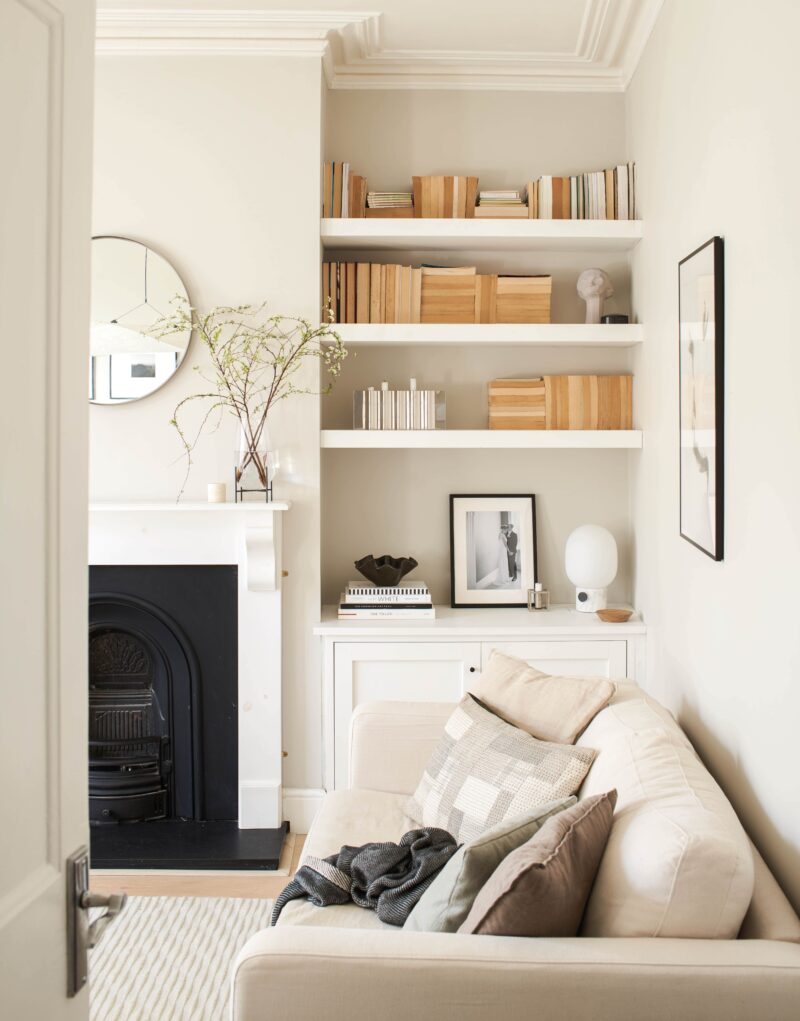
Credit: Benjamin Edwards for Ryland Peters & Small
For me, my home is a small Victorian terrace in Bristol, which I share with my husband Chris and our diabetic (and very loud!) Siamese-cross rescue cat, Loki. Style-wise, it’s understated and clutter-free but at the same time warm and inviting, with lots of cosy textures and natural materials. I’m always drawn towards timeless Scandinavian and mid-century modern design, and I also have a penchant for calming, muted colours – partly because I have a condition called synaesthesia, which means I see each letter and number as a particular hue, whether I’m reading, talking or even just thinking. It means my head is always buzzing with colour, so neutrals provide a much-needed antidote.
3. Can you tell us about your new book?
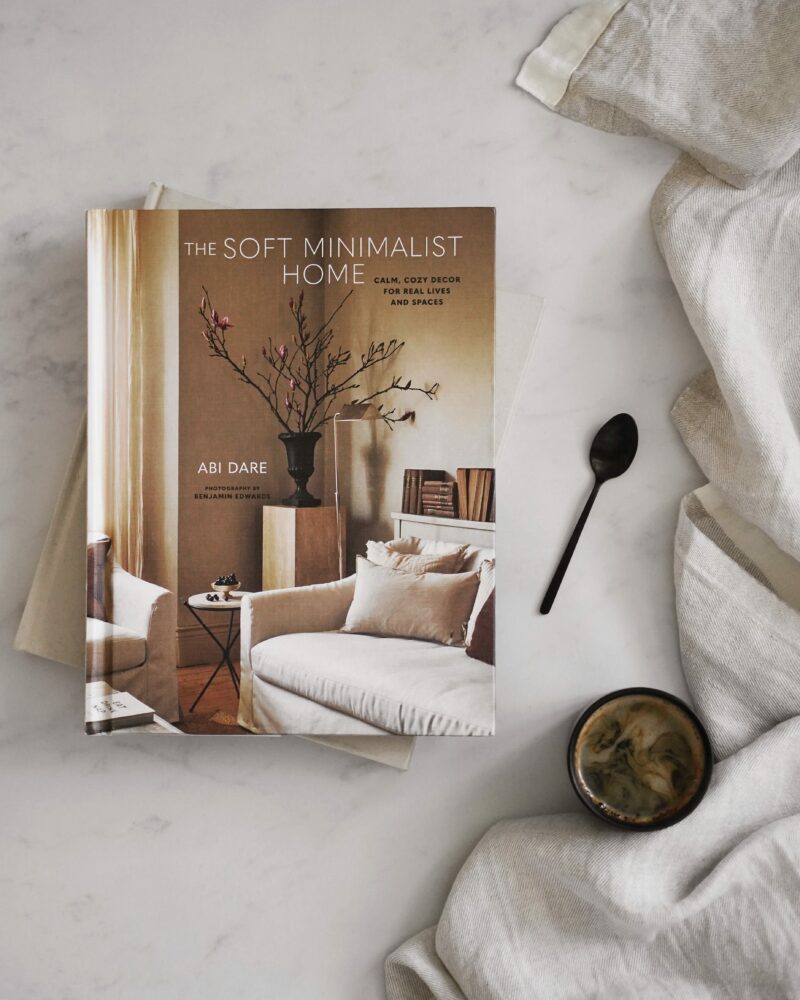
Credit: Abi Dare, These Four Walls
It’s called The Soft Minimalist Home – Calm, Cosy Decor for Real Lives and Spaces, and it encapsulates everything I cover on my blog. It introduces a relaxed, liveable approach to minimalism, and dispels the myth that minimalist interiors are stark, soulless boxes with no personality. There’s a lot of practical advice, alongside peeks inside 15 beautiful real-life homes across the UK and Europe. There are places large and small, new and old, urban and rural, rented and owned – homes for families, single people, and couples. I wanted to demonstrate that minimalist spaces can be cosy, full of character and attainable for all, no matter what your budget or the type of property you live in.
4. What inspired you to focus on minimalist decoration?
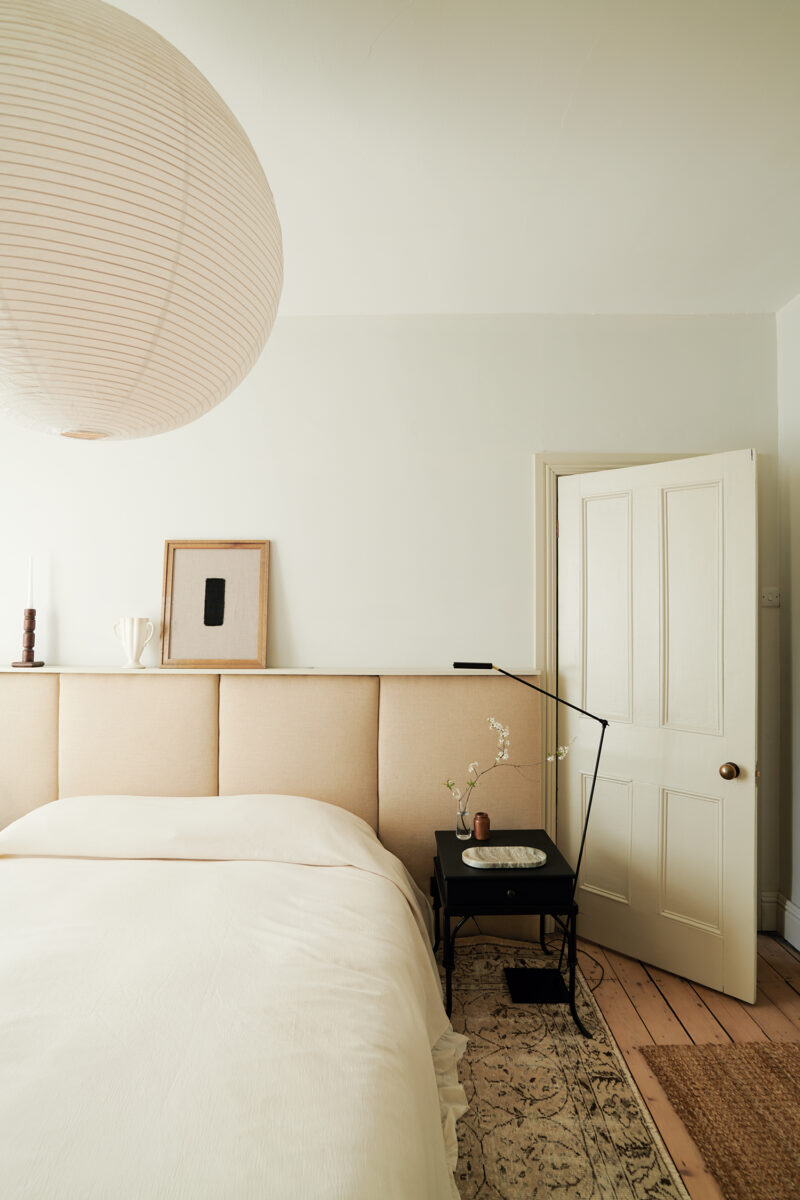
Credit: Benjamin Edwards for Ryland Peters & Small
Over the years, I’ve realised that I feel happiest and most comfortable in pared-back spaces, and I wanted to empower others to harness the benefits that minimalist decor can have on mood and well-being. My take on minimalism is a little different to what many people expect, though. It’s not about pushing a certain aesthetic or getting rid of all your passions; it’s about freeing up space to celebrate your style and the things you truly cherish.
5. What are the fundamental things to consider when creating a more minimalist home?
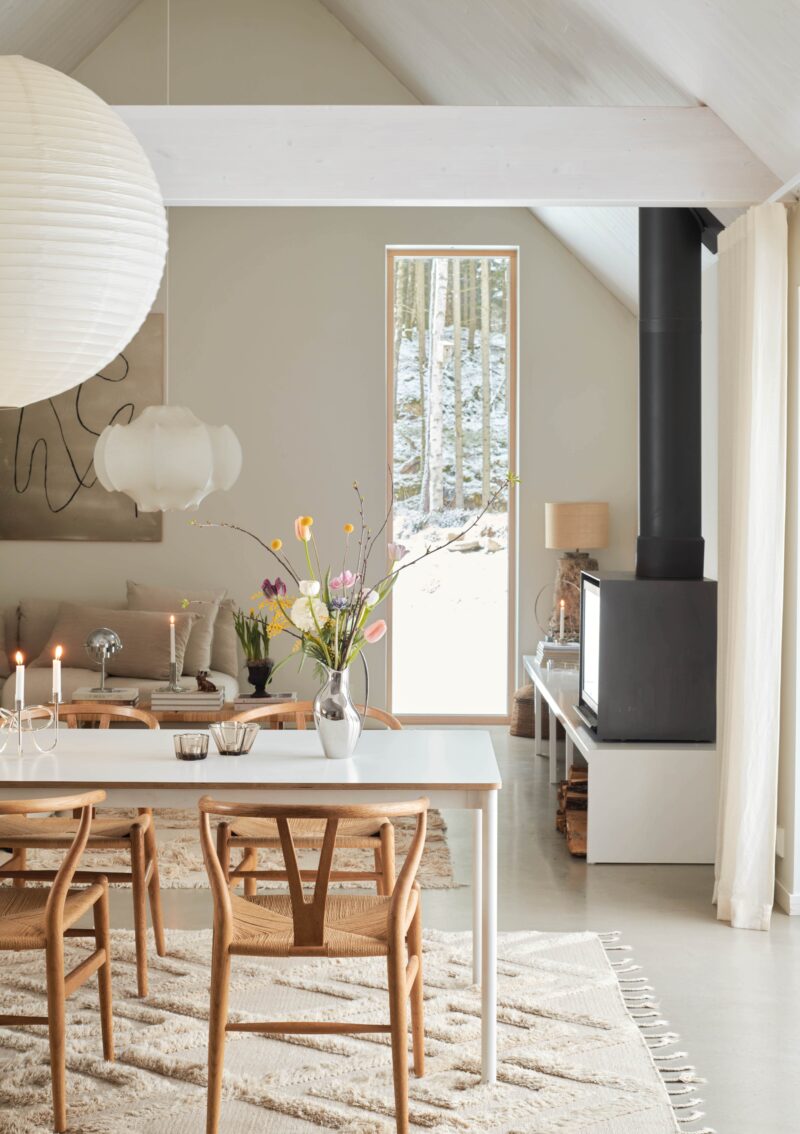
Credit: Benjamin Edwards for Ryland Peters & Small
I always break it down into several key elements: colour, layout, lighting, texture, and balancing storage with enticing displays. I also like to add references to the natural world through things like accessories and materials, as they make any space feel calmer and more appealing. It may sound like a lot to consider, but my book takes you through them in a clear, concise way, with lots of tips that you can easily implement in your own home.
6. Do you have any top design tips to help you get started?
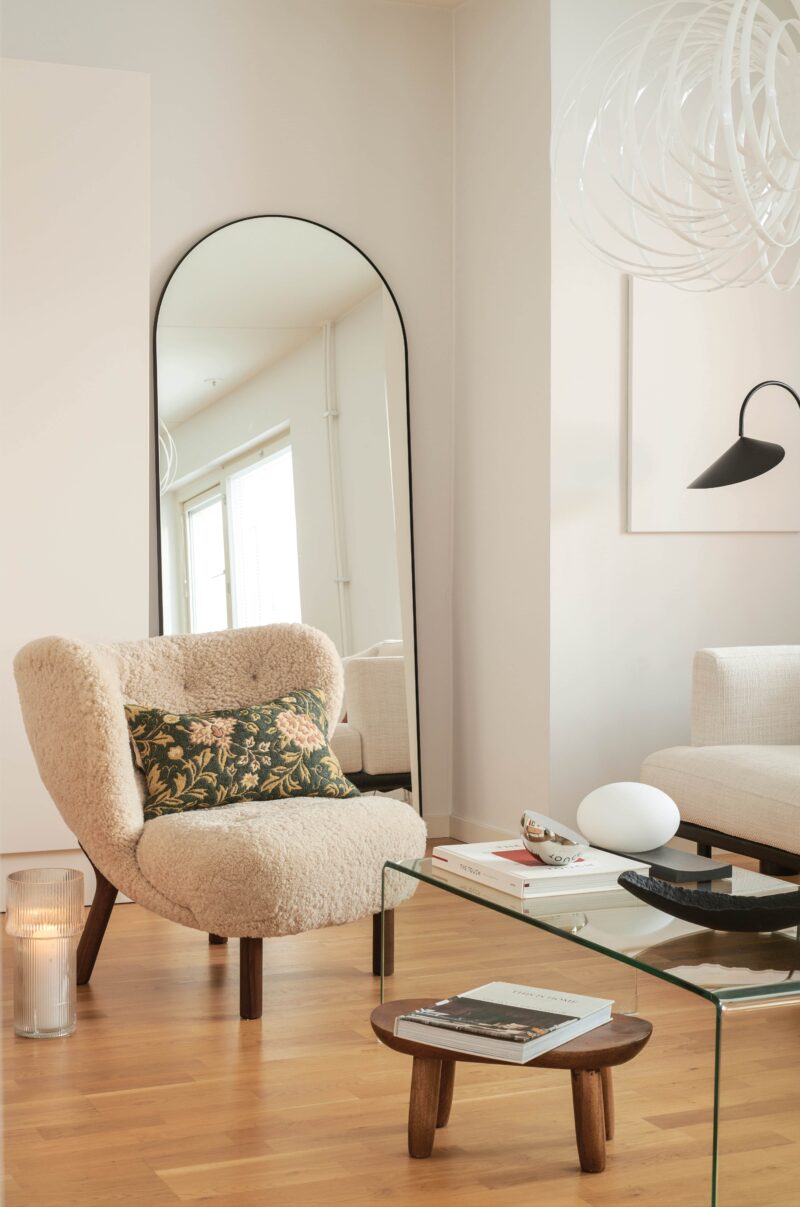
Credit: Benjamin Edwards for Ryland Peters & Small
First and foremost, take some time to think about what really matters to you, whether that be space to enjoy a hobby, a social hub for family time, or an art collection that you’d love to showcase. Once you’ve worked out what you want your home to say about you and do for you, everything else will follow and begin to fall into place.
7. How do you make this design style easy to live with on a day-to-day basis?
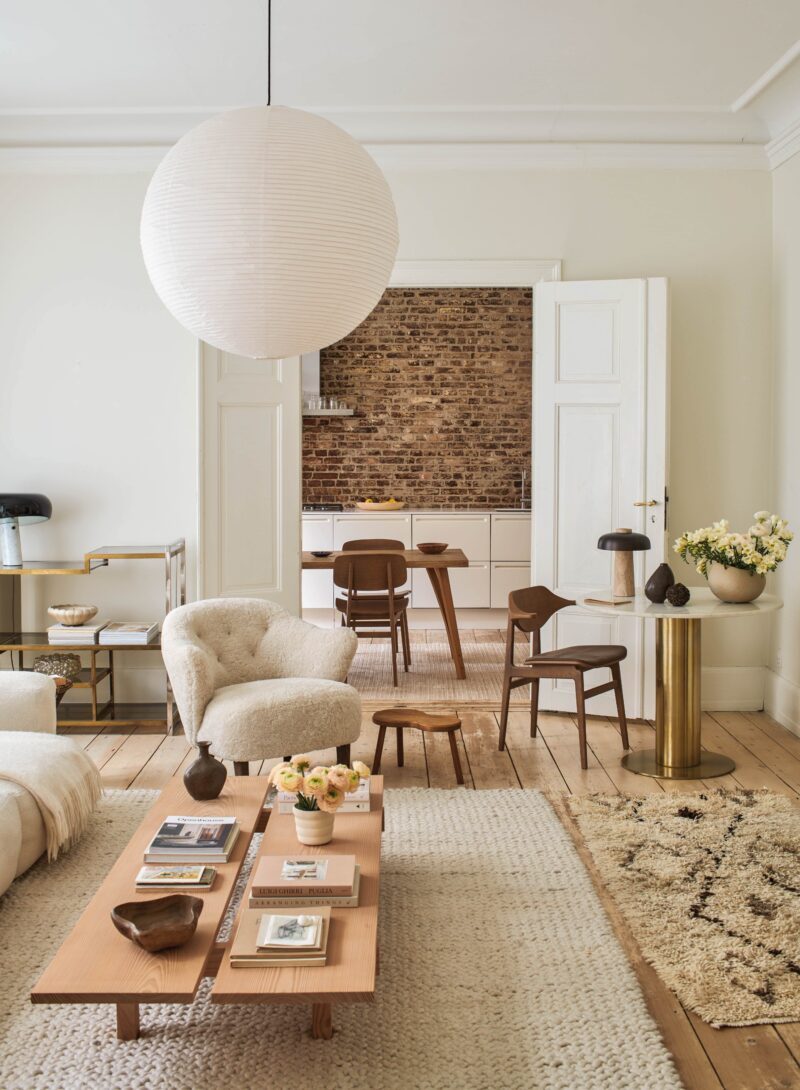
Credit: Benjamin Edwards for Ryland Peters & Small
It’s important to get the basics right – the practical rather than the more aesthetic aspects of design. Finding a layout that works for you and your home is key – arranging your space so that it accommodates all the activities you need it to, with enticing focal points, a good sense of flow, and clearly defined zones.
Good storage is also vital, and you can add more via stand-alone furniture, fitted cupboards, or nifty tricks like under-bed boxes and coffee tables with hidden compartments. Layout and storage may not sound as exciting as choosing colours and furniture, but if you get them wrong then they create daily niggles that make a home stressful rather than calming.
8. How do you ensure a minimal space feels warm and welcoming?
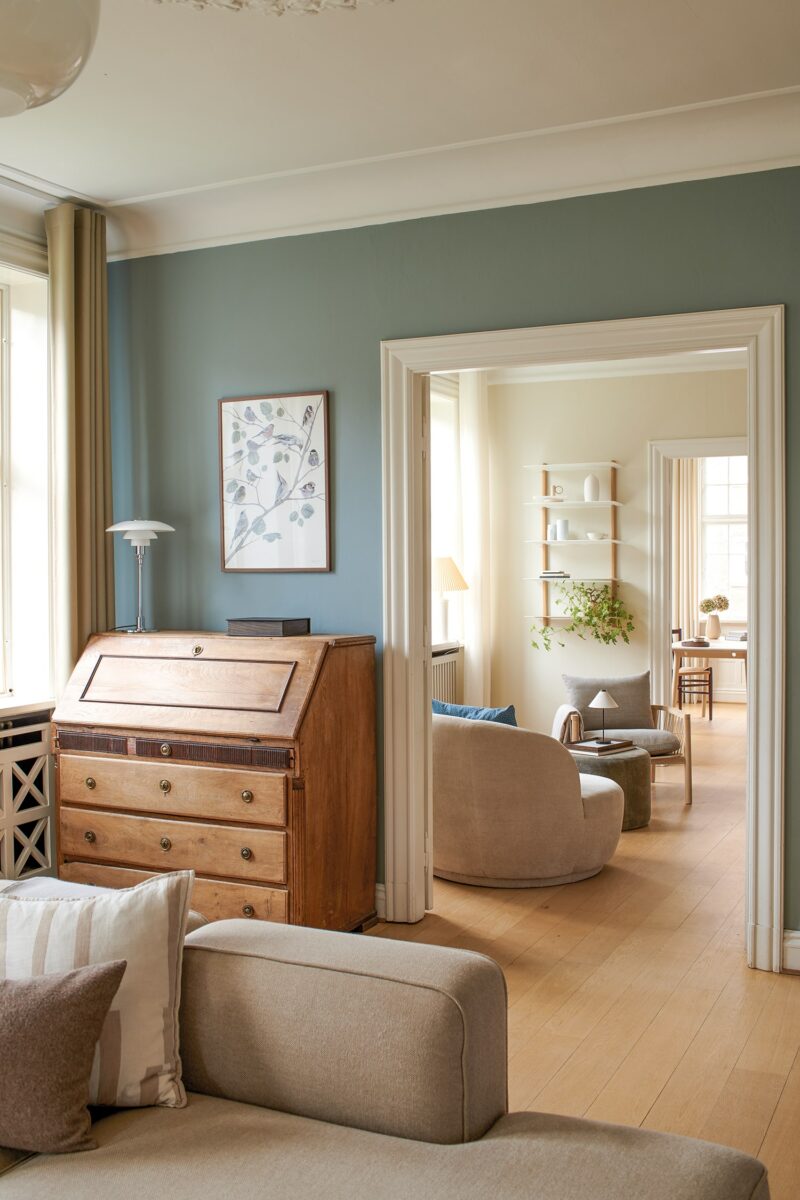
Credit: Benjamin Edwards for Ryland Peters & Small
Texture is essential for adding interest and warmth, and it’s easy to incorporate through soft furnishings, accessories and well-chosen furniture. Effective lighting is also key, and spaces always look cosier when there are layers of different light sources rather than a single, glaring overhead fixture.
Colour is another very important factor, as it has a big impact on the way a minimalist space looks and feels. Without much visual clutter to divert attention, it really does take centre stage, so choosing a palette that resonates with you emotionally is a must. For me and many others, that’s calming neutrals, but minimalist interiors certainly don’t preclude bright hues, and in fact, several homes in the book have vibrant decor. The key is working out what colours make you happy, and then how to best use them with the space and light you have in your home.
9. How do you create a considered minimalist home on a budget?
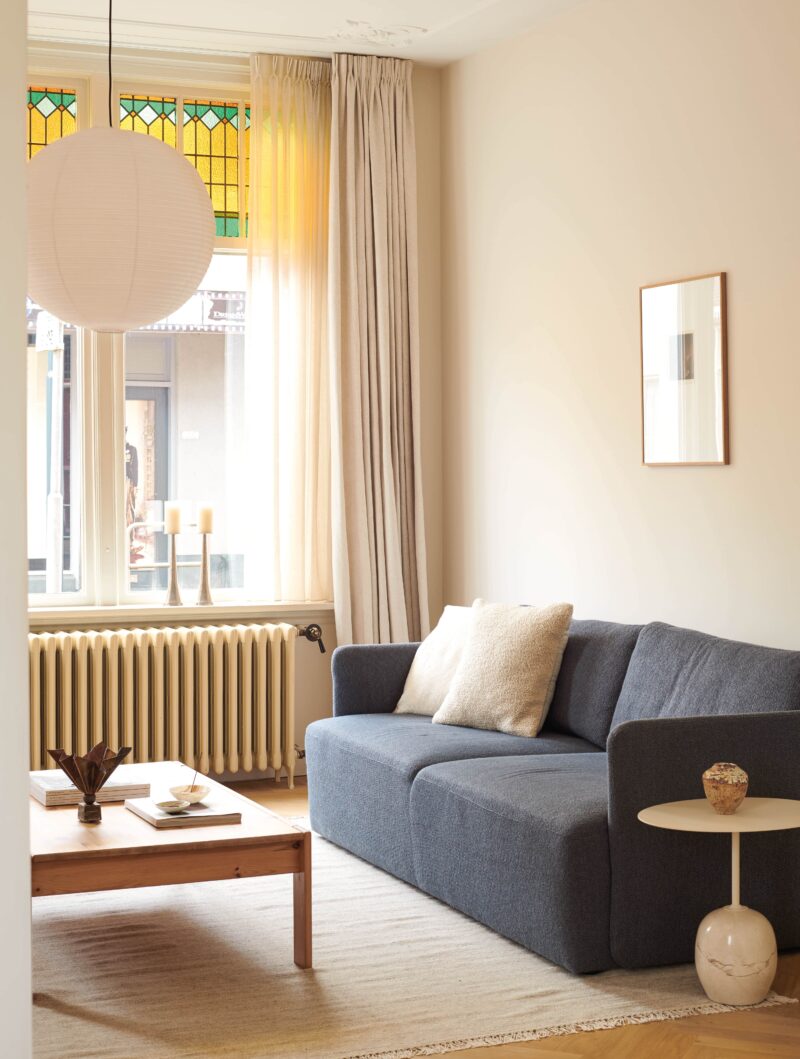
Credit: Benjamin Edwards for Ryland Peters & Small
In some ways, minimalist decor lends itself perfectly to decorating with limited funds, as there’s no pressure to buy things just for the sake of it. I’d always recommend working out what will have the most significant impact on your space and the way you use it, whether that be improving the storage or changing the lighting, and then focusing your budget on that. Other things can then be added over time, and you don’t need to rush – the most appealing and liveable interiors have often taken years to craft, and they naturally evolve with us.
Also, try to step away from all the noise and pressure around trends. You don’t need to spend money just to keep up with what a magazine or social media post has declared ‘in’ and ‘out’. All that really matters in your home is what you like and what makes you happy.
10. What’s been your favourite room to transform in your own home?
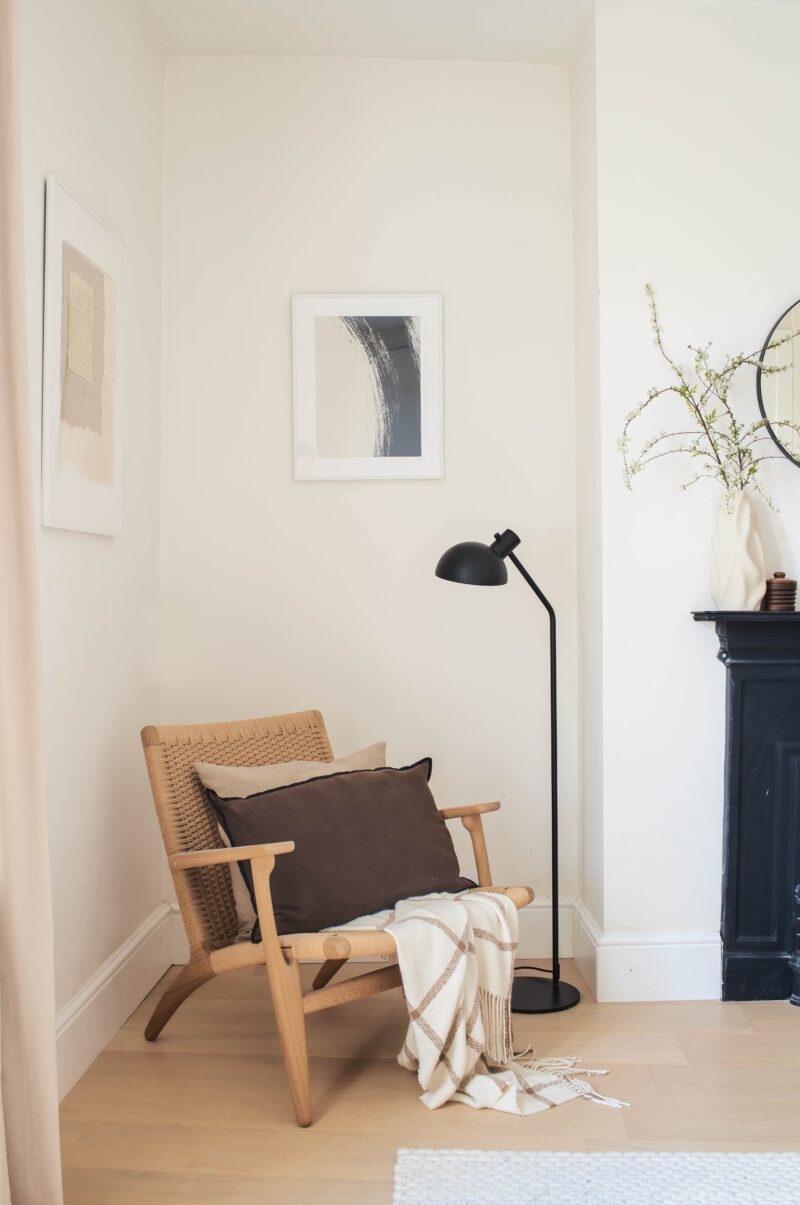
Credit: Benjamin Edwards for Ryland Peters & Small
The living room was the first room we finished and it set the calm yet cosy tone for the entire house, so it will always be a favourite. But the transformation that made the biggest difference to our day-to-day lives was changing the upstairs layout, what was once an ensuite bathroom is now a shower room accessible from the landing. It means friends and family staying in our guest bedroom don’t have to trek downstairs to the other bathroom, and losing the former ensuite door from our bedroom freed up a wall for a run of fitted wardrobes. They provide all the storage we need, so it’s now a serene, spacious sanctuary with no stress-inducing clutter.
11. Which Oak Furnitureland products do you think suit the more minimal approach?
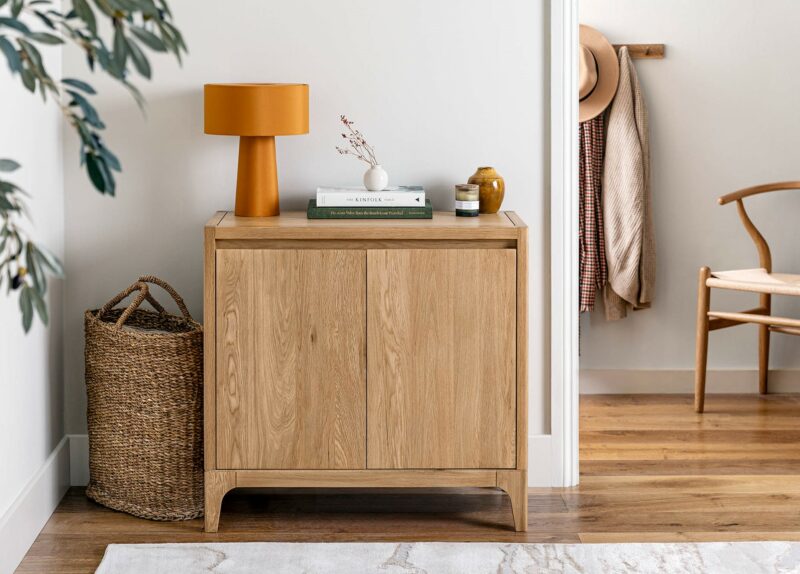
Durham small sideboard | Lars chair
In a minimalist interior, nothing is there just for the sake of it, so it’s important to look out for pieces that are beautiful, timeless, and functional. The clean lines and gorgeous grain patterns of the Copenhagen and Durham ranges are ideal, and I love the way they combine practical storage with effortless style.
That said, individuality is key to my take on soft minimalist decor, so I’m always reluctant to pick one piece over another. The most important thing is to select furniture that suits you and your needs. Give yourself permission to choose what you love, rather than trying to conform to other people’s opinions, and you can’t go far wrong!
For more ideas on how to approach your own minimalist interior decor, order Abi Dare’s book The Soft Minimalist Home online or pick up a copy from your local bookshop. For a daily dose of inspiration, follow her gorgeous feed on Instagram @thesefourwallsblog.

